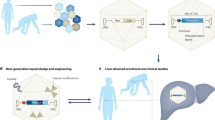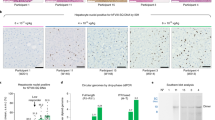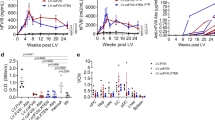Abstract
Hepatocytes are a key target for treatment of inborn errors of metabolism, dyslipidemia and coagulation disorders. The development of potent expression cassettes is a critical target to improve the therapeutic index of gene transfer vectors. Here we evaluated 22 hepatocyte-specific expression cassettes containing a human apo A-I transgene following hydrodynamic transfer of plasmids or adenoviral transfer with E1E3E4-deleted vectors in C57BL/6 mice. The DC172 promoter consisting of a 890 bp human α1-antitrypsin promoter and two copies of the 160 bp α1-microglobulin enhancer results in superior expression levels compared to constructs containing the 1.5 kb human α1-antitrypsin promoter, the 790 bp synthetic liver-specific promoter or the DC190 promoter containing a 520 bp human albumin promoter and two copies of the 99 bp prothrombin enhancer. The most potent expression cassette consists of the DC172 promoter upstream of the transgene and two copies of the hepatic control region-1. Minicircles containing this expression cassette induce persistent physiological human apo A-I or human factor IX levels after hydrodynamic transfer. In conclusion, in this comparative study of 22 hepatocyte-specific expression cassettes, the DC172 promoter in combination with two copies of the hepatic control region-1 induces the highest expression levels following hydrodynamic and adenoviral transfer.
This is a preview of subscription content, access via your institution
Access options
Subscribe to this journal
Receive 12 print issues and online access
$259.00 per year
only $21.58 per issue
Buy this article
- Purchase on Springer Link
- Instant access to full article PDF
Prices may be subject to local taxes which are calculated during checkout





Similar content being viewed by others
References
De Geest BR, Van Linthout SA, Collen D . Humoral immune response in mice against a circulating antigen induced by adenoviral transfer is strictly dependent on expression in antigen-presenting cells. Blood 2003; 101: 2551–2556.
Mingozzi F, Liu YL, Dobrzynski E, Kaufhold A, Liu JH, Wang Y et al. Induction of immune tolerance to coagulation factor IX antigen by in vivo hepatic gene transfer. J Clin Invest 2003; 111: 1347–1356.
Franco LM, Sun B, Yang X, Bird A, Zhang H, Schneider A et al. Evasion of immune responses to introduced human acid alpha-glucosidase by liver-restricted expression in glycogen storage disease type II. Mol Ther 2005; 12: 876–884.
Al-Dosari M, Zhang G, Knapp JE, Liu D . Evaluation of viral and mammalian promoters for driving transgene expression in mouse liver. Biochem Biophys Res Commun 2006; 339: 673–678.
De Geest B, Stengel D, Landeloos M, Lox M, Le Gat L, Collen D et al. Effect of overexpression of human apo A-I in C57BL/6 and C57BL/6 apo E-deficient mice on 2 lipoprotein-associated enzymes, platelet-activating factor acetylhydrolase and paraoxonase. Comparison of adenovirus-mediated human apo A-I gene transfer and human apo A-I transgenesis. Arterioscler Thromb Vasc Biol 2000; 20: E68–E75.
Guo ZS, Wang LH, Eisensmith RC, Woo SL . Evaluation of promoter strength for hepatic gene expression in vivo following adenovirus-mediated gene transfer. Gene Therapy 1996; 3: 802–810.
Kankkonen HM, Vahakangas E, Marr RA, Pakkanen T, Laurema A, Leppanen P et al. Long-term lowering of plasma cholesterol levels in LDL-receptor-deficient WHHL rabbits by gene therapy. Mol Ther 2004; 9: 548–556.
Van Linthout S, Collen D, De Geest B . Effect of promoters and enhancers on expression, transgene DNA persistence, and hepatotoxicity after adenoviral gene transfer of human apolipoprotein A-I. Hum Gene Ther 2002; 13: 829–840.
Wang L, Calcedo R, Nichols TC, Bellinger DA, Dillow A, Verma IM et al. Sustained correction of disease in naive and AAV2-pretreated hemophilia B dogs: AAV2/8-mediated, liver-directed gene therapy. Blood 2005; 105: 3079–3086.
Brinster RL, Allen JM, Behringer RR, Gelinas RE, Palmiter RD . Introns increase transcriptional efficiency in transgenic mice. Proc Natl Acad Sci USA 1988; 85: 836–840.
Liu K, Sandgren EP, Palmiter RD, Stein A . Rat growth hormone gene introns stimulate nucleosome alignment in vitro and in transgenic mice. Proc Natl Acad Sci USA 1995; 92: 7724–7728.
Miao CH, Ohashi K, Patijn GA, Meuse L, Ye X, Thompson AR et al. Inclusion of the hepatic locus control region, an intron, and untranslated region increases and stabilizes hepatic factor IX gene expression in vivo but not in vitro. Mol Ther 2000; 1: 522–532.
Palmiter RD, Sandgren EP, Avarbock MR, Allen DD, Brinster RL . Heterologous introns can enhance expression of transgenes in mice. Proc Natl Acad Sci USA 1991; 88: 478–482.
Agarwal M, Austin TW, Morel F, Chen J, Bohnlein E, Plavec I . Scaffold attachment region-mediated enhancement of retroviral vector expression in primary T cells. J Virol 1998; 72: 3720–3728.
Auten J, Agarwal M, Chen J, Sutton R, Plavec I . Effect of scaffold attachment region on transgene expression in retrovirus vector-transduced primary T cells and macrophages. Hum Gene Ther 1999; 10: 1389–1399.
Dang Q, Auten J, Plavec I . Human beta interferon scaffold attachment region inhibits de novo methylation and confers long-term, copy number-dependent expression to a retroviral vector. J Virol 2000; 74: 2671–2678.
Miao CH, Thompson AR, Loeb K, Ye X . Long-term and therapeutic-level hepatic gene expression of human factor IX after naked plasmid transfer in vivo. Mol Ther 2001; 3: 947–957.
Schiedner G, Hertel S, Johnston M, Biermann V, Dries V, Kochanek S . Variables affecting in vivo performance of high-capacity adenovirus vectors. J Virol 2002; 76: 1600–1609.
Chen ZY, He CY, Meuse L, Kay MA . Silencing of episomal transgene expression by plasmid bacterial DNA elements in vivo. Gene Therapy 2004; 11: 856–864.
Riu E, Grimm D, Huang Z, Kay MA . Increased maintenance and persistence of transgenes by excision of expression cassettes from plasmid sequences in vivo. Hum Gene Ther 2005; 16: 558–570.
Chen ZY, He CY, Ehrhardt A, Kay MA . Minicircle DNA vectors devoid of bacterial DNA result in persistent and high-level transgene expression in vivo. Mol Ther 2003; 8: 495–500.
De Geest B, Van Linthout S, Lox M, Collen D, Holvoet P . Sustained expression of human apolipoprotein A-I after adenoviral gene transfer in C57BL/6 mice: role of apolipoprotein A-I promoter, apolipoprotein A-I introns, and human apolipoprotein E enhancer. Hum Gene Ther 2000; 11: 101–112.
De Geest B, Van Linthout S, Collen D . Sustained expression of human apo A-I following adenoviral gene transfer in mice. Gene Therapy 2001; 8: 121–127.
Van Linthout S, Lusky M, Collen D, De Geest B . Persistent hepatic expression of human apo A-I after transfer with a helper-virus independent adenoviral vector. Gene Therapy 2002; 9: 1520–1528.
Yew NS . Controlling the kinetics of transgene expression by plasmid design. Adv Drug Deliv Rev 2005; 57: 769–780.
High KA, Manno C, Sabatino D, Hutchison S, Dake M, Razavi M et al. Immune responses to AAV and to factor IX in a phase I study of AAV-mediated, liver-directed gene transfer for hemophilia B. Mol Ther 2004; 9: S383–S384.
Ponder KP, Dunbar RP, Wilson DR, Darlington GJ, Woo SL . Evaluation of relative promoter strength in primary hepatocytes using optimized lipofection. Hum Gene Ther 1991; 2: 41–52.
Seppen J, Bakker C, de Jong B, Kunne C, van den Oever K, Vandenberghe K et al. Adeno-associated virus vector serotypes mediate sustained correction of bilirubin UDP glucuronosyltransferase deficiency in rats. Mol Ther 2006; 13: 1085–1092.
Ziegler RJ, Lonning SM, Armentano D, Li C, Souza DW, Cherry M et al. AAV2 vector harboring a liver-restricted promoter facilitates sustained expression of therapeutic levels of alpha-galactosidase A and the induction of immune tolerance in Fabry mice. Mol Ther 2004; 9: 231–240.
Rouet P, Raguenez G, Ruminy P, Salier JP . An array of binding sites for hepatocyte nuclear factor 4 of high and low affinities modulates the liver-specific enhancer for the human alpha1-microglobulin/bikunin precursor. Biochem J 1998; 334 (Part 3): 577–584.
Rouet P, Raguenez G, Tronche F, Mfou'ou V, Salier JP . Hierarchy and positive/negative interplays of the hepatocyte nuclear factors HNF-1, -3 and -4 in the liver-specific enhancer for the human alpha-1-microglobulin/bikunin precursor. Nucleic Acids Res 1995; 23: 395–404.
Rouet P, Raguenez G, Tronche F, Yaniv M, N'Guyen C, Salier JP . A potent enhancer made of clustered liver-specific elements in the transcription control sequences of human alpha 1-microglobulin/bikunin gene. J Biol Chem 1992; 267: 20765–20773.
Simonet WS, Bucay N, Lauer SJ, Taylor JM . A far-downstream hepatocyte-specific control region directs expression of the linked human apolipoprotein E and C-I genes in transgenic mice. J Biol Chem 1993; 268: 8221–8229.
Shachter NS, Zhu Y, Walsh A, Breslow JL, Smith JD . Localization of a liver-specific enhancer in the apolipoprotein E/C-I/C-II gene locus. J Lipid Res 1993; 34: 1699–1707.
Luo MJ, Reed R . Splicing is required for rapid and efficient mRNA export in metazoans. Proc Natl Acad Sci USA 1999; 96: 14937–14942.
Matsumoto K, Wassarman KM, Wolffe AP . Nuclear history of a pre-mRNA determines the translational activity of cytoplasmic mRNA. EMBO J 1998; 17: 2107–2121.
Xu ZL, Mizuguchi H, Ishii-Watabe A, Uchida E, Mayumi T, Hayakawa T . Optimization of transcriptional regulatory elements for constructing plasmid vectors. Gene 2001; 272: 149–156.
Xu ZL, Mizuguchi H, Ishii-Watabe A, Uchida E, Mayumi T, Hayakawa T . Strength evaluation of transcriptional regulatory elements for transgene expression by adenovirus vector. J Control Release 2002; 81: 155–163.
Chen ZY, He CY, Kay MA . Improved production and purification of minicircle DNA vector free of plasmid bacterial sequences and capable of persistent transgene expression in vivo. Hum Gene Ther 2005; 16: 126–131.
Alino SF, Herrero MJ, Noguera I, Dasi F, Sanchez M . Pig liver gene therapy by noninvasive interventionist catheterism. Gene Therapy 2007; 14: 334–343.
Crespo A, Peydro A, Dasi F, Benet M, Calvete JJ, Revert F et al. Hydrodynamic liver gene transfer mechanism involves transient sinusoidal blood stasis and massive hepatocyte endocytic vesicles. Gene Therapy 2005; 12: 927–935.
Zhang G, Gao X, Song YK, Vollmer R, Stolz DB, Gasiorowski JZ et al. Hydroporation as the mechanism of hydrodynamic delivery. Gene Therapy 2004; 11: 675–682.
Suda T, Gao X, Stolz DB, Liu D . Structural impact of hydrodynamic injection on mouse liver. Gene Therapy 2007; 14: 129–137.
Rubtsov MA, Polikanov YS, Bondarenko VA, Wang YH, Studitsky VM . Chromatin structure can strongly facilitate enhancer action over a distance. Proc Natl Acad Sci USA 2006; 103: 17690–17695.
Papapetrou EP, Ziros PG, Micheva ID, Zoumbos NC, Athanassiadou A . Gene transfer into human hematopoietic progenitor cells with an episomal vector carrying an S/MAR element. Gene Therapy 2006; 13: 40–51.
Baiker A, Maercker C, Piechaczek C, Schmidt SB, Bode J, Benham C et al. Mitotic stability of an episomal vector containing a human scaffold/matrix-attached region is provided by association with nuclear matrix. Nat Cell Biol 2000; 2: 182–184.
Manzini S, Vargiolu A, Stehle IM, Bacci ML, Cerrito MG, Giovannoni R et al. Genetically modified pigs produced with a nonviral episomal vector. Proc Natl Acad Sci USA 2006; 103: 17672–17677.
Stehle IM, Scinteie MF, Baiker A, Jenke AC, Lipps HJ . Exploiting a minimal system to study the epigenetic control of DNA replication: the interplay between transcription and replication. Chromosome Res 2003; 11: 413–421.
Jenke AC, Stehle IM, Herrmann F, Eisenberger T, Baiker A, Bode J et al. Nuclear scaffold/matrix attached region modules linked to a transcription unit are sufficient for replication and maintenance of a mammalian episome. Proc Natl Acad Sci USA 2004; 101: 11322–11327.
Christ M, Louis B, Stoeckel F, Dieterle A, Grave L, Dreyer D et al. Modulation of the inflammatory properties and hepatotoxicity of recombinant adenovirus vectors by the viral E4 gene products. Hum Gene Ther 2000; 11: 415–427.
Ding E, Hu H, Hodges BL, Migone F, Serra D, Xu F et al. Efficacy of gene therapy for a prototypical lysosomal storage disease (GSD-II) is critically dependent on vector dose, transgene promoter, and the tissues targeted for vector transduction. Mol Ther 2002; 5: 436–446.
De Geest B, Zhao Z, Collen D, Holvoet P . Effects of adenovirus-mediated human apo A-I gene transfer on neointima formation after endothelial denudation in apo E-deficient mice. Circulation 1997; 96: 4349–4356.
Jallat S, Perraud F, Dalemans W, Balland A, Dieterle A, Faure T et al. Characterization of recombinant human factor IX expressed in transgenic mice and in derived trans-immortalized hepatic cell lines. EMBO J 1990; 9: 3295–3301.
Kurachi S, Hitomi Y, Furukawa M, Kurachi K . Role of intron I in expression of the human factor IX gene. J Biol Chem 1995; 270: 5276–5281.
Higgins GM, Anderson RM . Restoration of the liver of the white rat following partial surgical removal. Arch Pathol 1931; 12: 186–202.
De Geest B, Van Linthout S, Collen D . Sustained expression of human apo A-I following adenoviral gene transfer in mice. Gene Therapy 2001; 8: 121–127.
Snoeys J, Mertens G, Lievens J, van Berkel T, Collen D, Biessen EA et al. Lipid emulsions potently increase transgene expression in hepatocytes after adenoviral transfer. Mol Ther 2006; 13: 98–107.
Hirsch S, Gordon S . Polymorphic expression of a neutrophil differentiation antigen revealed by monoclonal antibody 7/4. Immunogenetics 1983; 18: 229–239.
Acknowledgements
This work was supported by grants G.0563.05 and G.0564.05 of the Fonds voor Wetenschappelijk Onderzoek-Vlaanderen. The Center for Molecular and Vascular Biology is supported by the Excellentiefinanciering KU Leuven (EF/05/013). Frank Jacobs is a Research Assistant of the Instituut voor de Aanmoediging van Innovatie door Wetenschap en Technologie in Vlaanderen. Eline Van Craeyveld is a Research Assistant of the Fonds voor Wetenschappelijk Onderzoek-Vlaanderen. We thank J Hendrix and Z Zhang for excellent technical assistance.
Author information
Authors and Affiliations
Corresponding author
Rights and permissions
About this article
Cite this article
Jacobs, F., Snoeys, J., Feng, Y. et al. Direct comparison of hepatocyte-specific expression cassettes following adenoviral and nonviral hydrodynamic gene transfer. Gene Ther 15, 594–603 (2008). https://doi.org/10.1038/sj.gt.3303096
Received:
Revised:
Accepted:
Published:
Issue Date:
DOI: https://doi.org/10.1038/sj.gt.3303096
Keywords
This article is cited by
-
Histone deacetylase inhibitors reactivate silenced transgene in vivo
Gene Therapy (2019)
-
Selective homocysteine-lowering gene transfer attenuates pressure overload-induced cardiomyopathy via reduced oxidative stress
Journal of Molecular Medicine (2015)
-
Beneficial effects of selective HDL-raising gene transfer on survival, cardiac remodelling and cardiac function after myocardial infarction in mice
Gene Therapy (2013)
-
Therapeutic Response in Feline Sandhoff Disease Despite Immunity to Intracranial Gene Therapy
Molecular Therapy (2013)
-
Low-density lipoprotein receptor gene transfer in hypercholesterolemic mice improves cardiac function after myocardial infarction
Gene Therapy (2012)



